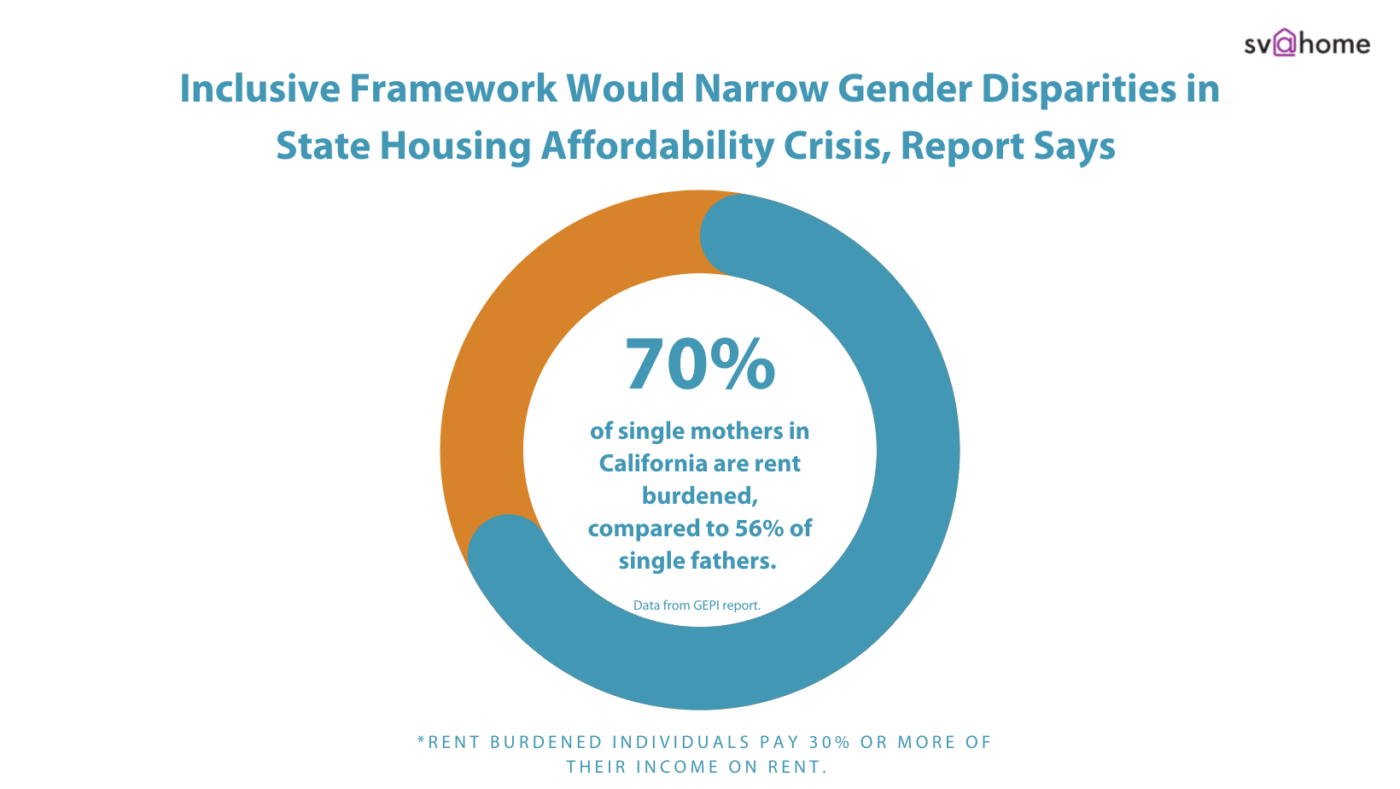By Maren Bick-Maurischat
Housing Policy Intern
A new report produced by the Gender Equity Policy Institute (GEPI), Gender, and Housing in California, explores how the housing affordability crisis in California compounds gender inequality and discrimination issues, particularly for Black, Latinx, and indigenous women. GEPI analyzed data collected in the American Community Survey from 2019 and U.S. Census data from 2020. Overall, the report shows that women’s experience with housing costs burdens and instability reflects their disadvantaged economic status due to a legacy of systemic gender discrimination and its intersection with other forms of discrimination. The report concludes with several policy recommendations and highlights the urgency to address these issues, particularly in light of the opportunities afforded by the state’s budget surplus.
To access the full report and read the complete list of findings click through the following link: Gender & Housing in California. Here are some key areas and important findings:
Women overall suffer the burden of the housing crisis more than men. Nearly half or 49 percent of women fall into the rent-burdened consideration, paying over 30 percent of their income for rent, compared to 43 percent of men. The hardship increases significantly for women at the intersection of other patterns of discrimination, including BIPOC women, elderly women, and single mothers.
Single mothers and women living alone face particular difficulties. Key data points illustrating these disparities include:
- 66 percent of women living alone in California are rent burdened.
- 73 percent of single mothers are rent burdened, compared to 56 percent of single fathers who are rent burdened.
- One-third of elderly Black and Latinx women living alone have an income below the federal poverty line, well below what is necessary to afford even the lowest rents in most parts of the state.
There is also a significant disparity regarding the intersection of race and gender and the burden falls heavily on Black women and other women of color. For example:
- 59 percent of Black women are rent burdened and 33 percent are severely rent burdened paying more than half their income for rent.
- The majority of Black women also live in households led by women, which compounds the existing cost burden.
- 52 percent of Latinx women are rent burdened.
- 49 percent of Indigenous women and white women are rent burdened.
The housing market, and the state’s affordability crisis, are not distinct in their gender disparity and must be understood in the context of financial gender discrimination across economic and social sectors. Women, on average, receive lower wages, face discrimination regarding career advancement, and on average, have higher student debt burdens, all contributing to the disparity in wealth between women and men. Understanding how gender discrimination manifests within the housing crisis provides an opportunity to respond with specific solutions.
To address these gender discrepancies in housing, the report proposed several recommendations. They include the following:
- Use a gender-inclusive framework in the housing policy process.
The report recommends the production of research and data to understand better how gender impacts Californians’ experience with housing. One policy suggests the inclusion of gender when considering housing development and planning, similar to how the industry and policy have adapted to include accessibility.
- Produce more housing and increase state funding for housing development.
Because the housing crisis disproportionately impacts women, one of the report’s most straightforward and clear suggestions is to produce more housing across the board. Make it easier to build housing and make more state funding available to develop affordable housing.
- Address gender and queer needs in the context of homelessness.
This means understanding how this community’s needs might be unique and creating a framework to address these issues.
Along with the report’s findings, the Gender Equity Policy Institute also noted that with a surplus state budget and local housing element process, creating a gender-aware framework for affordable housing is particularly timely for California.
